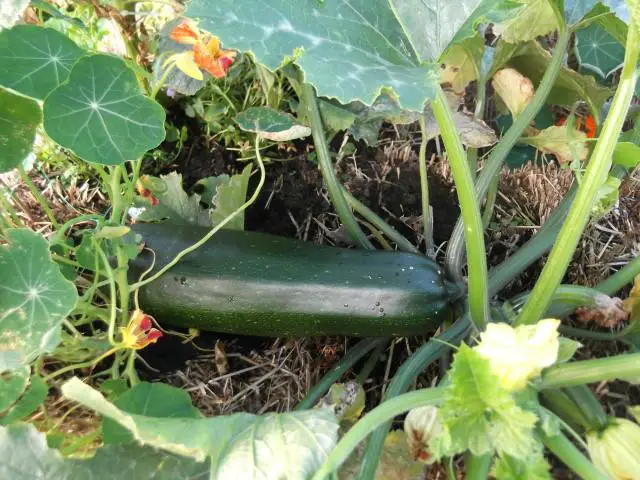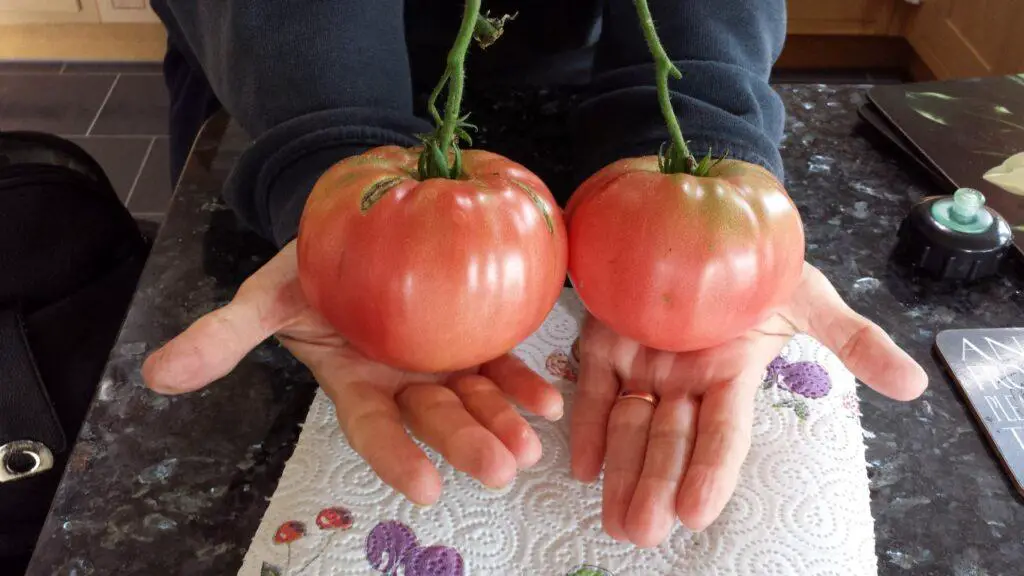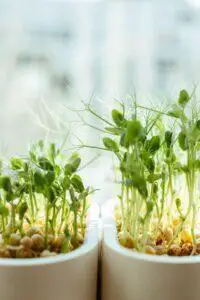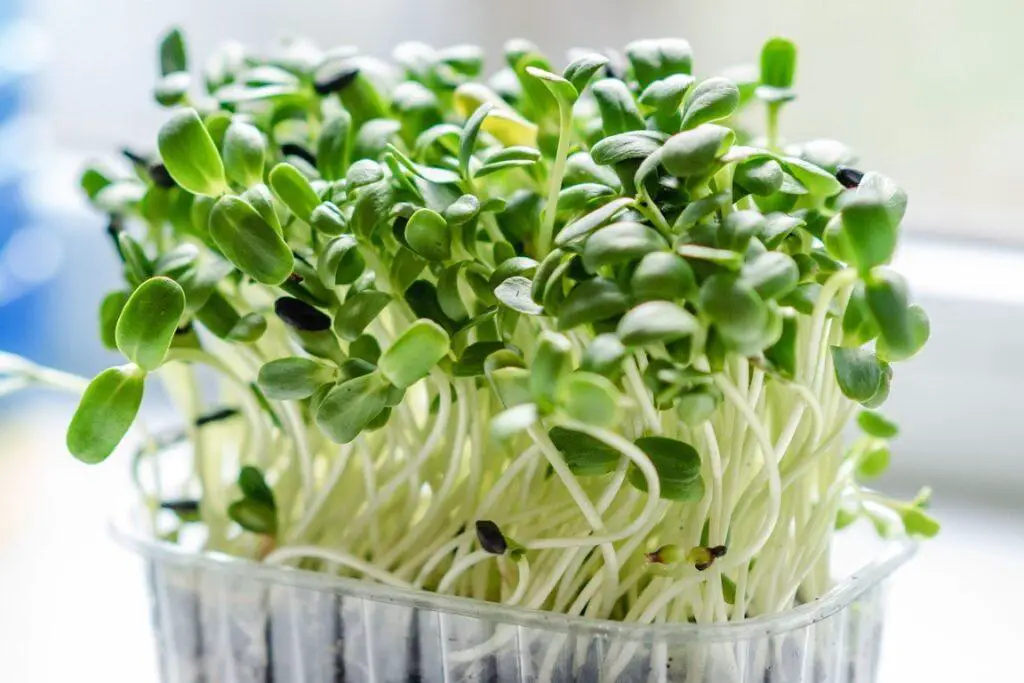Why grow vegetables in pots and containers?
The fact is that not everybody has the space for a set-aside vegetable plot of half an acre or so. You may not even have space for a Raised Bed configuration where you can grow your own veggies.
This is especially the case if you live in the city, perhaps even a high-rise apartment, where you have virtually no extra space except perhaps a balcony or if you are really fortunate, a roof area specifically designated for growing your own food.
So what do you do in these circumstances where you desperately want to grow some easy growing vegetables, but you have little space to do so?
The answer is simple – you choose vegetables that you can grow in pots small enough to place around your limited space, but large enough to accommodate your veggie plants.
This is also called ‘container gardening’ or ‘small space gardening’ and it can be incredibly productive – and it’s great for your mental and physical health!
So what are easy growing vegetables that will thrive in pots? Here is a list of some of the more popular and well known varieties, most of which are fast-growing, and do not require ‘green fingers’ to grow them.
Ten easy vegetables to grow in pots
- Beans: These are simple to grow and most varieties will produce a crop in about 60-70 days after planting. Popular beans would include runner beans, French beans, lima beans (also called butter beans), and fava beans. Most varieties apart from the ‘bush’ varieties will need some support such as a cane or framework to tie them to.
- Cucumber: This is another easy to grow vegetable that will produce throughout the growing season – and there are a whole load of varieties to choose from. These include ‘long’ varieties such as the ‘Ashley’ or ‘Early Pride’ or the shorter pickling varieties like the ‘Calypso’ ‘picklebush’ or the ‘carolina’. Most varieties can be planted in a pot and allowed to grow along the ground, or they can be grown up a supporting framework.
- Courgette (zucchini): This is a popular plant to grow and can be used in a variety of ways including pickling when it is small. Only 1 plant per pot will produce many courgettes throughout the season – but watch out for blossom end rot, which could be a sign that the nutrient balance in the soil is not ideal. Notably the courgette flower is edible and can be carefully stuffed with a soft filling to make a tasty side-dish.
- Eggplant: This makes a colourful addition to your container garden, being a deep purple in colour. Similar to courgette, usually 1 plant per 2 minimum gallon pot is ideal. The plant should produce a harvest about 80 days after planting seedlings.
- Hot or sweet chillies: These are definitely a favourite plant to grow in pots – especially the hot chilli varieties as they are easy to grow and produce an abundant crop of chillies. A single hot chilli plant such as the Capsicum annum, or Capsicum baccatum, will produce enough chili to keep you ‘hot’ all winter!
- Lettuce and leafy greens: Another favorite that with regular planting will give you a fresh harvest throughout the summer months – and even into the fall under cover.
- Potatoes: Early, 2nd early and main crop potatoes will all grow quite happily in pots or containers. Perhaps consider a ‘potato sack’ to get a better or larger crop of potatoes. One potato per pot is adequate, or maybe 2 tubers in a larger potato sack. Any more will just produce smaller tubers as they fight for water and nutrients.
- Peas: A great crop to grow in pots of all sizes, they will produce food most of the season, are easy to grow and very undemanding. ‘Sugar-snap’ peas are excellent in that you can use the whole pods in a salad or stir fry. ‘Lincoln’ produce excellent full-bodied peas for eating raw from the pod or canning.
- Radish: This is another simple vegetable to grow that will give you a harvest from seed in only 6 weeks or so. A great salad vegetable that produces results throughout the season with regular planting.
- Tomatoes: No respectable garden would be complete without a tomato plant or 3! There are a multitude of tomato varieties to choose from whether you prefer the small ‘cherry’ tomatoes or the larger ‘beefsteak’ varieties. Bush or vine tomatoes will grow perfectly well in a 2 gallon pot or large container. Only 1 plant per pot to avoid them becoming root-bound and unproductive.
Best soil mix for pots:
Although different veggies can require different soil for the best results. I tend to use a mix of compost, course sand and vermiculite in more or less equal amounts, for all the vegetables I grow in pots – and get excellent results overall.
This mix will ensure that the soil in the pot does not become compacted, thereby restricting root growth and the general health of the plant. If you have a good quality topsoil then adding this to the mix will certainly help.
Pot sizes for container gardening
In rough terms, the smaller or shallow rooted plants can be grown in smaller pots. Some herbs or lettuce for example can be grown in pots only 4-5 inches deep and 8 inches or so diameter.
Larger plants like the potatoes, tomatoes, courgette, or eggplant need to be grown in large pots to stop them becoming root-bound and unproductive. Pots of 2 gallon size and upward are required (garden pail size) to get best results.
Generally speaking, larger is better! The biggest problems you will face with small containers is that the plants will become root-bound, the soil will dry out quickly, and the taller plants especially will be blown over in a slight breeze.
If you go for a larger pot on the other hand – you will not have any of these problems, even if you don’t actually need the extra depth for roots, you will benefit from stability.
Summary:
I believe that growing vegetables in pots and containers is the way to go – even if you already have an established traditional vegetable garden.
Growing in pots and containers allows you to bring your most used vegetables ‘closer to home’ right up to the back door!
Another advantage is that you can move your pots around the patio to get best advantage of the sun no matter what the time of year.
All-in-all, container gardening in this way can be a real pleasure, and bring a great deal of satisfaction – food for the soul as they say.




